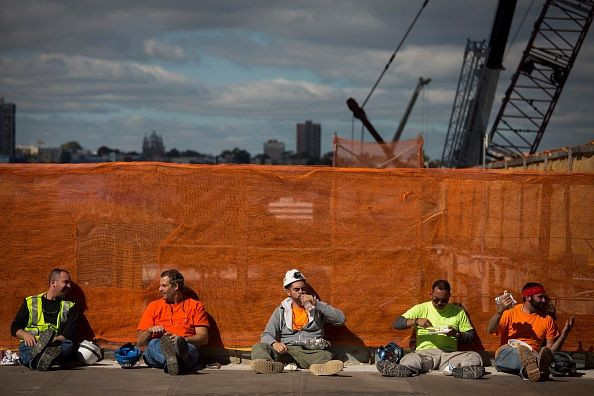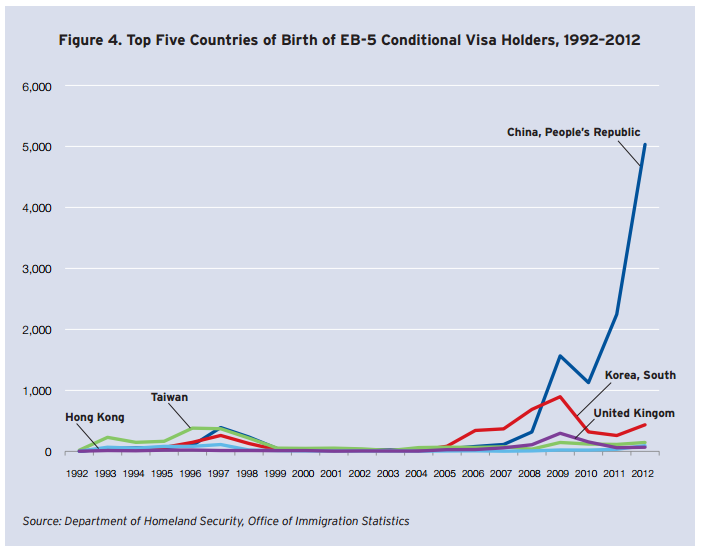EB-5 Immigrant Investor Visa Could Face Big Changes If Lawmakers Have Their Way

Whether you’re fleeing a war-torn country or seeking a lucrative Silicon Valley tech career, it can take years to obtain permanent residency in the U.S., the first solid step toward citizenship. But each year, thousands of wealthy foreign families, most of them from China, have fast-tracked their way to green cards by writing $500,000 checks to U.S.-based developers.
At midnight Friday, a crucial component of the EB-5 Immigrant Investor Program is set to expire -- barring congressional action -- and some lawmakers are hoping to end or reform the program they say has turned into a visa-for-sale bazaar, moving away from its original intent: to steer foreign direct investment toward economically depressed parts of the country.
“In the early '90s, these EB-5-funded projects were very practical, like building infrastructure and developing areas around closed military bases,” said Audrey Singer, a senior fellow of metropolitan policy at the Brookings Institution think tank in Washington D.C. “There were a lot of projects like this and there are still some. But when the last recession took hold, developers had to look elsewhere to finance their projects.”
Since the Great Recession, more of this money has poured into big urban development projects, from luxury high-rise apartments in Miami to downtown Seattle skyscrapers, as U.S. banks reined in lending in the wake of the 2007-09 financial crisis.
Hungry for cash, U.S. developers looked to the growing list of wealthy Chinese citizens seeking U.S. residency who were eager to throw money at the EB-5 program. Demand for the visas jumped from about 1,400 in 2008 to more than 10,000 last year, exceeding the annual quota for the first time in the program's history, according to the U.S. Department of Homeland Security.
At least four out of five of these visa applicants have been Chinese every year since 2012. These investors can obtain green cards within a few years if their investment created or preserved at least 10 American jobs.
David Appel, a senior partner at Marcum LLP, advises high-net-worth individuals from China, Venezuela, Brazil and elsewhere on the EB-5 program and says this demand is a good thing.
“These people I am meeting with and talking to are well-to-do individuals who for personal reasons are moving their families to the United States and there’s an economic benefit to that,” Appel said. “These families aren’t just entering the U.S. and investing in projects. They’re also creating businesses, buying real estate and transferring their assets here.”
But detractors argue that the benefits of the program are overblown.
“The program generates a droplet of new foreign investment,” said David North, a senior fellow at the Center for Immigration Studies, which advocates for immigration reduction. “It’s invisible compared to all foreign investment. Every year there’s more than $200 billion in new foreign direct investment [into the United States].”

North questions how job creation and preservation can be truly measured. Under the current rules, for example, a steelworker's job in Ohio making girders for a building in Los Angeles funded by EB-5 investors would count as one preserved job. Even supporters of the program question this methodology.
The federal government estimates that nearly $9 billion in foreign investment has come to the country since the legislation creating the program was passed in 1990, adding or preserving an estimated 57,000 jobs. That amounts to an average annual investment rate of about $360 million and some 2,280 jobs preserved or created a year nationwide.
But Singer co-authored a study last year that found the EB-5 program so secretive that nobody knows accurately how many jobs have been created or preserved under the program. In 2013, the Inspector General of the Department of Homeland Security, which oversees the program, concluded the EB-5 money is so loosely tracked that it’s impossible for the federal government to really know the effect of the investment on local job creation.
In order to allow foreign nationals to invest $500,000 in these projects for green cards, states and cities have been creative with their definitions of “Targeted Employment Areas,” or TEAs. But local officials have had carte blanche to define what constitutes an economically depressed area, leading to possible gerrymandering of investment zones to clump housing projects in one part of the city with posh neighborhoods in another. Loopholes such as this have irked lawmakers who say the program lacks proper oversight.
By midnight on Friday, Congress must vote on a stopgap spending bill to avoid a government shutdown or vote to extend the debate through next week. Folded inside the bill could be legislation proposed by Sens. Patrick Leahy, D-Vt. and Chuck Grassley, R-Iowa, that aim at significant reforms to the EB-5 program.
The move would reauthorize the EB-5 program with significant reforms designed to bring the program back to its roots: a way to fund projects in less glitzy areas of the country. But it likely won’t satisfy the critics who say a fast-track path to U.S. citizenship should not be for sale to the highest bidders.
© Copyright IBTimes 2025. All rights reserved.






















